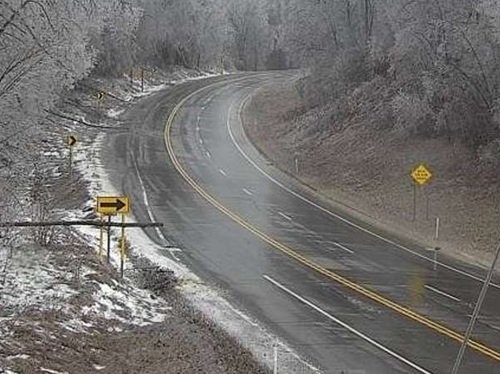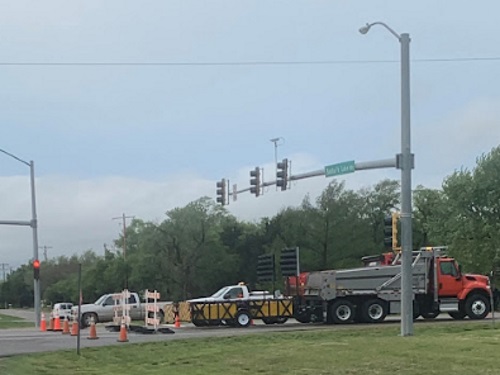The Kansas Department of Transportation recently unveiled an online interactive tool to help municipalities analyze county-owned roads and bridges as well as determine priorities to meet future local road system needs.
[Above photo by the Kansas DOT]
Referred to as “KLIP,” the Kansas Local Infrastructure Planning Tool taps into existing county-level road and bridge data to provide insights on local infrastructure conditions through an interactive viewer.

That should allow county officials to better prioritize and plan transportation investments, including for critical connections among agricultural, rural and urban communities across Kansas.
KLIP – developed by Kansas DOT’s Bureau of Local Projects in coordination with the Kansas Association of Counties and the Kansas County Highway Association – provides a historic look at investments in road and bridge maintenance and construction for each county.
Using information based on such factors as number of bridges or miles of roadway, KLIP can project future funding need, creating plans based on user inputs of costs for various activities, mill levy increases, inflation rates, and possible changes to the size of the transportation system in that county.

“The timing for this new tool is perfect,” explained Kansas DOT Secretary Julie Lorenz in a statement. “While our county roads and bridges are aging and construction and maintenance costs are rising, we also have great opportunities [as] there are significant federal funding opportunities available to local governments.”
In related activity, Governor Laura Kelly (D) and Kansas DOT recently selected 34 cities across Kansas to receive over $28 million for improvements to the state’s highway system located within their boundaries.
Those funds – disbursed via the Kansas DOT’s City Connecting Link Improvement Program or CCLIP – will help preserve and improve pavement, add turn lanes, and modify intersections along essential roadways in both rural and urban areas throughout the state.

Kansas defines a “City Connecting Link” as any routing of the state’s highway system located with the corporate limits of a city, not including the interstate system
“By making this investment, we’re improving the safety and accessibility of Kansas roadways that are local centers of community life,” Gov. Kelly said in a separate statement. “Through these grants, we’re delivering economic opportunities throughout rural and urban Kansas.”
Kansas DOT said it increased CCLIP funding level for this selection cycle by more than $10 million compared to previous years due to additional federal funds coming to Kansas as part of the $1.2 trillion Infrastructure Investment and Jobs Act or IIJA enacted in November 2021.
 States
States
Podcast: Flashing LED Lights Can Boost Roadway Safety
December 5, 2025 States
States

